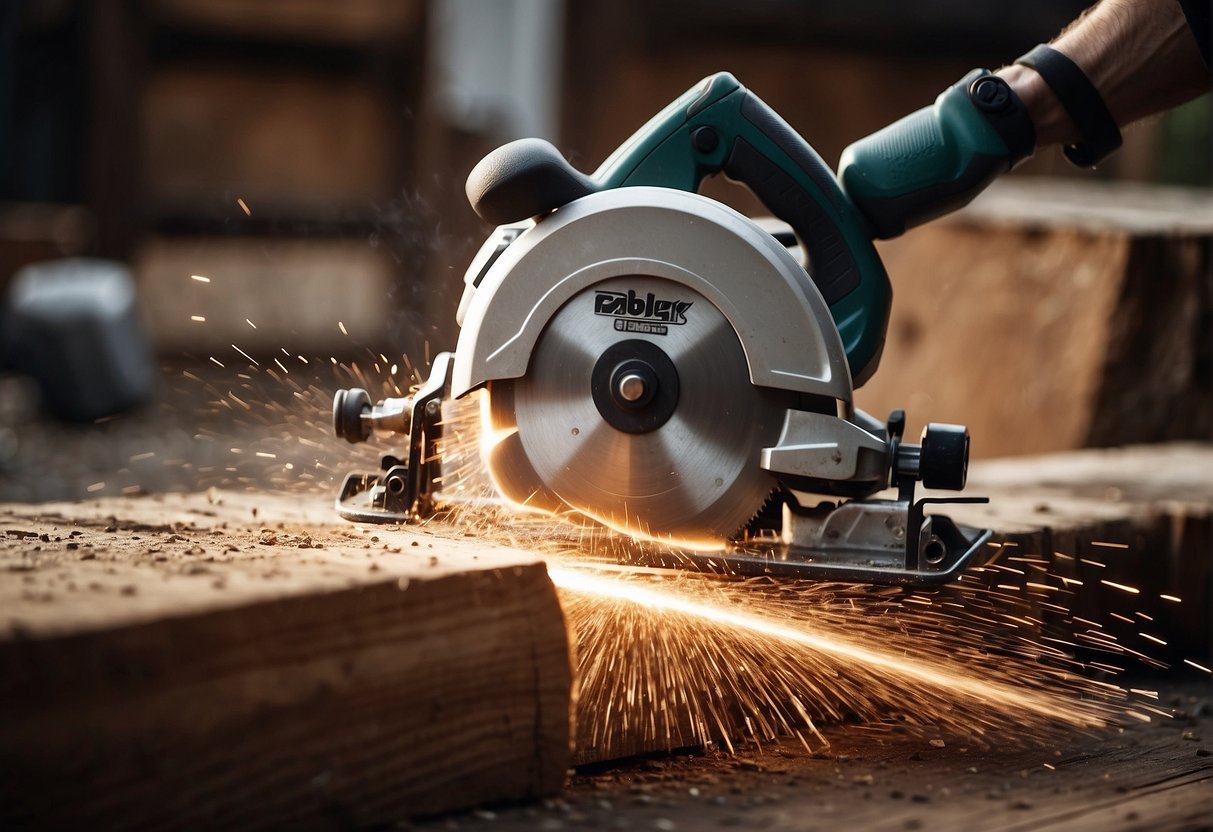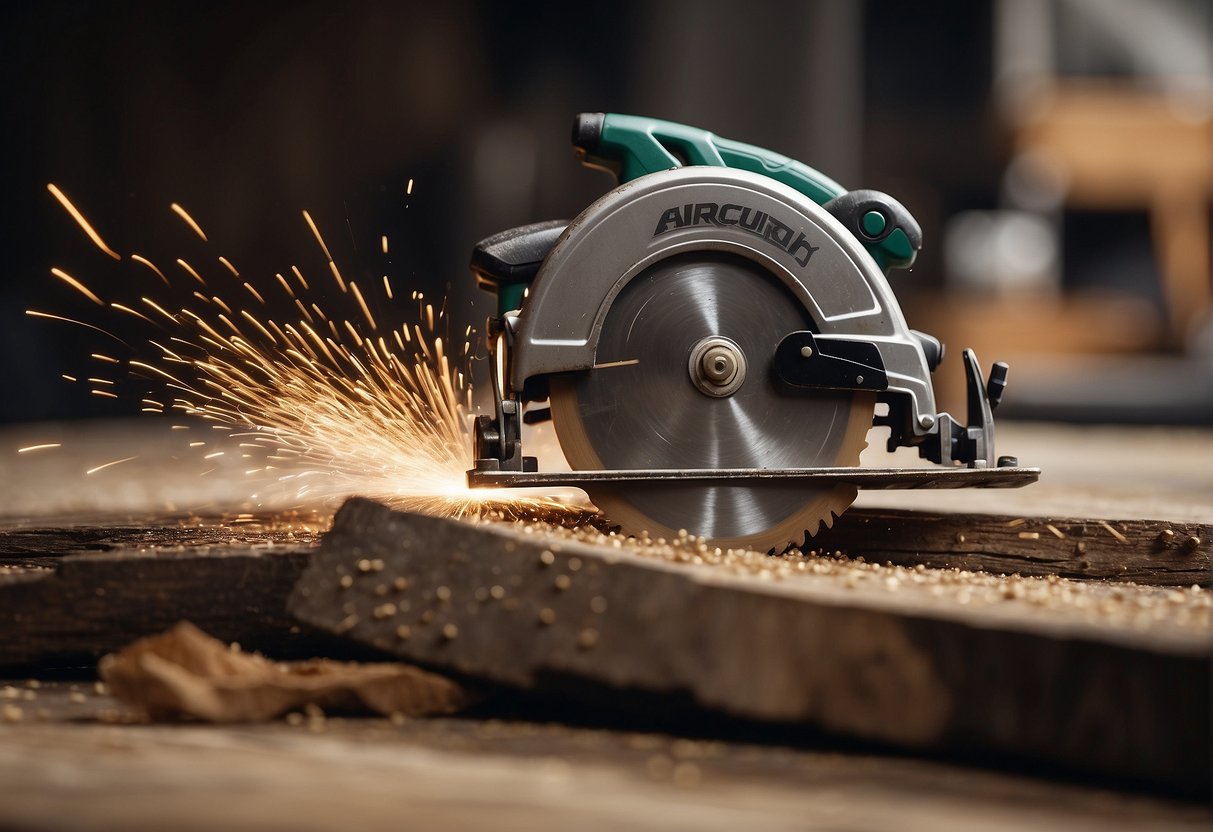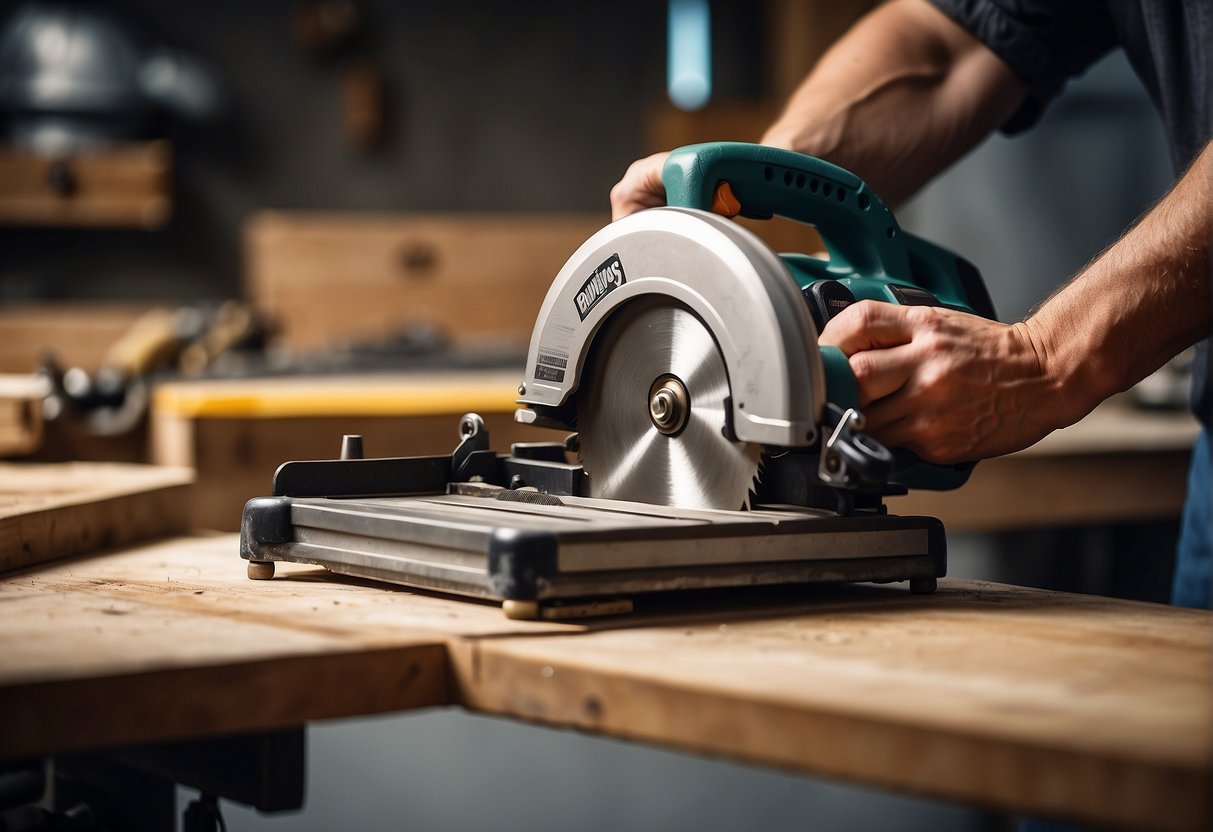Circular saws are a staple tool in any woodworking shop. They are versatile, powerful, and can make quick work of any cutting task. However, the performance of a circular saw is only as good as the blade that it uses. A dull or worn-out blade can cause a variety of issues, including rough cuts, splintered edges, and even damage to the saw itself. So, how long do circular saw blades last, and how can you tell when it’s time to replace them?
Understanding circular saw blades is the first step in answering these questions. Circular saw blades are made up of several components, including the teeth, gullet, and plate. The teeth are the sharp, pointed parts of the blade that actually cut through the wood. The gullet is the space between the teeth that allows for sawdust to be removed from the cut. The plate is the body of the blade that supports the teeth and gullet. Each of these components plays a crucial role in the performance and longevity of the blade.
Factors affecting blade longevity include the quality of the blade material, the type of wood being cut, and the frequency and intensity of use. Proper maintenance and care can also have a significant impact on the lifespan of a circular saw blade. By understanding these factors, you can take steps to extend the life of your blades and ensure that they are performing at their best.
Understanding Circular Saw Blades
As a woodworker, I know that circular saw blades are an essential tool for precision cutting of various materials. The lifespan of a circular saw blade is influenced by several factors, including the type of blade, quality, materials, and usage. In this section, I will provide an overview of circular saw blades, including the types and materials used.
Types of Circular Saw Blades
Circular saw blades are available in different types, each designed for specific applications. The most common types include:
-
Rip Blades: These blades are designed for cutting along the grain of the wood and are ideal for making long cuts.
-
Crosscut Blades: These blades are designed for cutting across the grain of the wood and are ideal for making precise cuts.
-
Combination Blades: These blades are versatile and can be used for both ripping and crosscutting.
-
Dado Blades: These blades are designed for making grooves or dadoes in wood.
Circular Saw Blade Materials
Circular saw blades are made from different materials, each with its unique properties. The most common materials include:
-
Carbide-Tipped Blades: These blades are durable and can cut through various materials, including wood, metal, and plastic.
-
Diamond-Tipped Blades: These blades are designed for cutting hard materials such as concrete, tile, and stone.
-
High-Speed Steel Blades: These blades are ideal for cutting softer materials such as wood and aluminum.
-
Steel Blades: These blades are the most affordable and are ideal for light-duty cutting tasks.
-
Aluminum Blades: These blades are designed for cutting non-ferrous metals such as aluminum and brass.
In conclusion, understanding the types and materials used in circular saw blades is essential in determining the lifespan of the blade. By choosing the right blade for the job and using it correctly, you can extend the life of your circular saw blade and achieve precise cuts every time.
Factors Affecting Blade Longevity
As a professional woodworker, I understand the importance of maintaining the quality of my tools. One of the most crucial tools in my workshop is the circular saw blade. The lifespan of a circular saw blade depends on several factors, including frequency of use, material being cut, cutting speed, and technique.
Frequency of Use
The frequency of use is one of the most critical factors affecting the lifespan of a circular saw blade. The more often you use the blade, the faster it will wear out. However, this doesn’t mean that you should avoid using your saw altogether. Instead, you should aim to use your saw efficiently and effectively. You should also ensure that you are using the right blade for the job.
Material Being Cut
The material being cut is another essential factor affecting the lifespan of a circular saw blade. Different materials require different blades. For example, if you are cutting wood, you should use a blade designed for wood. If you are cutting metal, you should use a blade designed for metal. Using the wrong blade for the material can cause the blade to wear out faster and can also damage the material being cut.
Cutting Speed and Technique
The cutting speed and technique are also important factors affecting the lifespan of a circular saw blade. Cutting too quickly or with too much force can cause the blade to wear out faster. On the other hand, cutting too slowly can cause the blade to overheat, which can also damage the blade. It’s essential to find the right balance between speed and technique to ensure that your blade lasts as long as possible.
In addition to these factors, the material being cut can also affect the lifespan of a circular saw blade. Abrasive materials, such as concrete, can cause the blade to wear out faster than non-abrasive materials. However, with proper technique and the right blade, you can still cut abrasive materials without significantly reducing the lifespan of your blade.
Overall, the lifespan of a circular saw blade depends on several factors, and it’s essential to consider each of these factors when using your saw. By using the right blade, cutting at the right speed and with the right technique, and avoiding abrasive materials when possible, you can ensure that your blade lasts as long as possible.
Maintenance and Care for Circular Saw Blades
As a professional woodworker, I know that proper maintenance and care of circular saw blades is essential to ensure that they last as long as possible. Here are some tips on how to keep your saw blades in top condition.
Cleaning the Blade
One of the most important things you can do to keep your circular saw blade in good condition is to clean it regularly. After each use, use a soft-bristled brush to remove any sawdust, resin, or other debris that may have accumulated on the blade. For stubborn debris, you can use a blade cleaning solution or a mixture of water and dish soap.
Sharpening the Blade
Regular sharpening is also essential to ensure that your circular saw blade maintains its cutting edge. The frequency of sharpening depends on how frequently you use the saw, the type of material you are cutting, and the quality of the blade. A dull blade can cause the saw to work harder, which can lead to overheating and damage to the motor.
Inspecting for Wear and Damage
Inspecting the blade regularly for wear and damage is also important. Look for signs of chipping, warping, or other damage to the teeth of the blade. If you notice any damage, replace the blade immediately. Proper sharpening and care can help prevent damage to the blade and extend its lifespan.
In summary, proper maintenance and care of your circular saw blade is essential to ensure that it lasts as long as possible. Regular cleaning, sharpening, and inspection can help prevent damage and keep your saw blade in top condition.
When to Replace Your Circular Saw Blade
As a professional woodworker, I know how important it is to have a sharp and efficient circular saw blade. A dull or damaged blade can not only affect the quality of your work but also pose a risk of accidents. Therefore, it is essential to know when to replace your circular saw blade. In this section, I will discuss the signs that indicate it’s time to replace your blade.
Signs of a Dull Blade
A dull blade is one of the most common reasons for poor quality cuts and uneven edges. If you notice that your saw is struggling to cut through the material or producing rough edges, it’s time to check the blade. One of the easiest ways to determine if your blade is dull is to observe the sawdust. A sharp blade creates fine sawdust, while a dull blade produces coarse sawdust.
Another sign of a dull blade is burn marks on the wood. If you notice excessive burning, it’s a clear indication that your blade is not sharp enough to cut through the material efficiently. A dull blade also increases the risk of accidents, as it requires more force to push the saw through the material, which can lead to kickbacks.
Visible Damage and Wear
Apart from a dull blade, visible damage and wear are also signs that it’s time to replace your circular saw blade. If you notice chipping or missing teeth, it’s a clear indication that the blade has suffered damage and is no longer efficient. Uneven cuts are also a sign that the blade is not in good condition.
Inspect your blade regularly for any visible signs of wear and tear. If you notice any cracks or warping, it’s time to replace the blade. A damaged blade not only affects the quality of your work but also poses a risk of accidents.
In conclusion, it’s essential to replace your circular saw blade when it’s no longer efficient or has suffered visible damage. A dull blade, burn marks, uneven cuts, and visible wear and tear are all signs that indicate it’s time to replace your blade. Regular maintenance and inspection of your blade can help you avoid accidents and ensure the quality of your work.
Selecting the Right Blade for Your Project
When it comes to cutting wood accurately, choosing the right blade for your circular saw is crucial. In this section, I will discuss the factors to consider when selecting the right blade for your project.
Blade Quality and Type
The quality of the blade is one of the most important factors to consider when selecting a circular saw blade. High-quality circular saw blades are made of carbide, which is a durable material that can withstand the rigors of construction projects. Carbide blades are also designed to stay sharp for a longer period of time, which means that you won’t have to replace them as frequently.
Another factor to consider is the type of blade. There are different types of blades available, each designed for specific applications. For example, a rip blade is designed to cut with the grain of the wood, while a crosscut blade is designed to cut across the grain. It’s important to choose the right type of blade for your project to ensure an accurate cut.
Tooth Count and Blade Thickness
The number of teeth on a circular saw blade is another important factor to consider. Blades with a higher tooth count are designed for smoother cuts, while blades with a lower tooth count are designed for faster cuts. The thickness of the blade is also important to consider. Thicker blades are more durable and can handle tougher materials, while thinner blades are better for softer materials.
When selecting a circular saw blade, it’s important to choose one that is appropriate for your project. By considering the quality of the blade, the type of blade, tooth count, and blade thickness, you can ensure that you get a blade that will provide you with accurate cuts and last for a long time.
Frequently Asked Questions
When should a circular saw blade be replaced?
A circular saw blade should be replaced when it becomes dull or damaged. A dull blade can cause rough cuts, splintering, and overheating of the saw. A damaged blade, such as one with missing or broken teeth, can be dangerous and should be replaced immediately. It is recommended to inspect the blade regularly and replace it as soon as any signs of wear or damage are noticed.
How do I determine if my circular saw blade is no longer sharp?
There are a few signs that indicate a circular saw blade is no longer sharp. The blade may produce smoke or sparks while cutting, leave burn marks on the wood, or produce rough cuts. Another way to determine if the blade is dull is to check the quality of the cut. A sharp blade will produce a clean and smooth cut, while a dull blade will produce a rough and uneven cut.
Is sharpening a circular saw blade a cost-effective option?
Sharpening a circular saw blade can be a cost-effective option if the blade is still in good condition and has not been sharpened too many times before. However, sharpening a blade can also reduce its lifespan and affect its performance. It is important to consider the cost of sharpening versus the cost of a new blade and make an informed decision based on the condition of the blade and the frequency of use.
What factors affect the longevity of a circular saw blade?
Several factors can affect the longevity of a circular saw blade, including the quality of the blade, the type of material being cut, the frequency of use, and the maintenance of the blade. Using a high-quality blade and cutting materials within the blade’s recommended range can help extend the blade’s lifespan. Regular maintenance, such as cleaning and lubricating the blade, can also help keep the blade in good condition.
Which circular saw blade material offers the longest durability?
The durability of a circular saw blade depends on the material it is made of. Carbide-tipped blades are known for their durability and can last longer than other types of blades. They are also more expensive than other blades. High-speed steel (HSS) blades are another durable option, but they are not as long-lasting as carbide-tipped blades.
How often should I sharpen my circular saw blade to maintain its performance?
The frequency of sharpening a circular saw blade depends on how often it is used and the type of material being cut. A blade that is used frequently and cuts hard materials may need to be sharpened more often than a blade that is used infrequently and cuts soft materials. As a general rule, a blade should be sharpened when it starts to produce rough cuts or burn marks on the wood. It is important to follow the manufacturer’s recommendations for sharpening and maintenance to ensure the blade’s longevity and performance.

Hi, I’m Sal Muller of Tooltrip.com. My DIY experience led me to understand essential power tools for home projects. Tooltrip.com guides enthusiasts and professionals in choosing right tools for any job. I provide concise top tool reviews for easier, efficient DIY.




